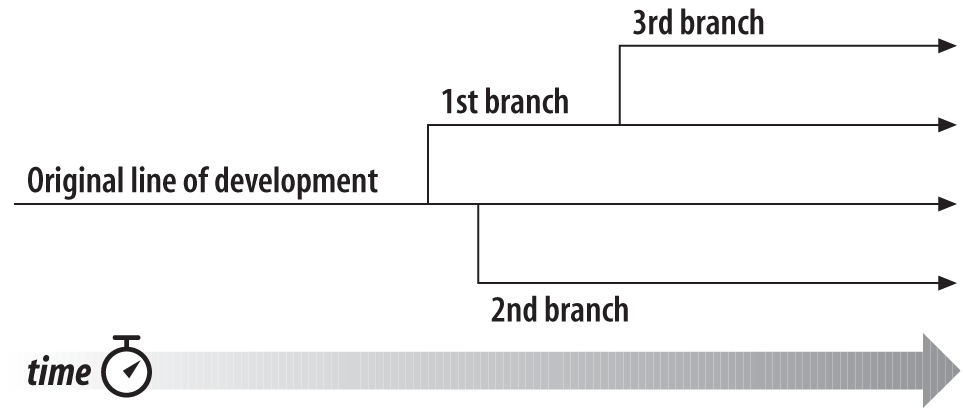“君子务本 (It is upon the Trunk that a gentleman works.)” | ||
| --Confucius | ||
Branching, tagging, and merging are concepts common to almost all version control systems. If you’re not familiar with these ideas, we provide a good introduction in this chapter. If you are familiar, hopefully you’ll find it interesting to see how Subversion implements them.
Branching is a fundamental part of version control. If you’re going to allow Subversion to manage your data, this is a feature you’ll eventually come to depend on. This chapter assumes that you’re already familiar with Subversion’s basic concepts (see Chapter 1).
Suppose it’s your job to maintain a document for a division in your company—a handbook of some sort. One day a different division asks you for the same handbook, but with a few parts “tweaked” for them, since they do things slightly differently.
What do you do in this situation? You do the obvious: make a copy of your document and begin maintaining the two copies separately. As each department asks you to make small changes, you incorporate them into one copy or the other.
You often want to make the same change to both copies. For example, if you discover a typo in the first copy, it’s very likely that the same typo exists in the second copy. The two documents are almost the same, after all; they differ only in small, specific ways.
This is the basic concept of a branch—namely, a line of development that exists independently of another line, yet still shares a common history if you look far enough back in time. A branch always begins life as a copy of something, and moves on from there, generating its own history (see Figure 4-1).
Subversion has commands to help you maintain parallel branches of your files and directories. It allows you to create branches by copying your data, and it remembers that the copies are related to one another. It also helps you duplicate changes from one branch to another. Finally, it can make portions of your working copy reflect different branches so that you can “mix and match” different lines of development in your daily work.
Get Version Control with Subversion, 2nd Edition now with the O’Reilly learning platform.
O’Reilly members experience books, live events, courses curated by job role, and more from O’Reilly and nearly 200 top publishers.


